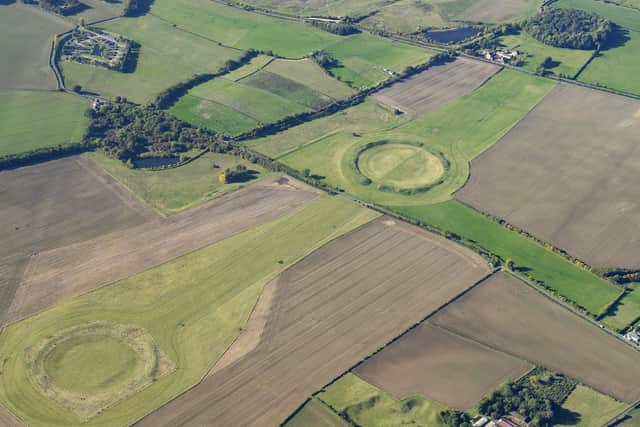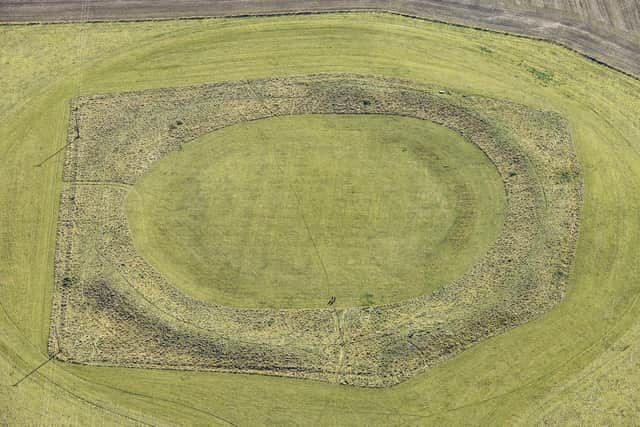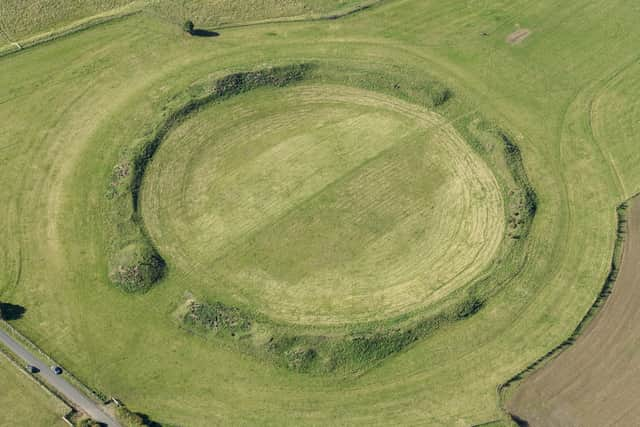Thornborough Henge: where is ‘Stonehenge of the North’, what are mysterious monuments, when were they built?
and live on Freeview channel 276
People will soon have a chance to see a “highly significant” and “breath-taking” part of the country’s history for themselves as a Neolithic henge site in the north of England, which was previously closed off to the public, has been opened up.
Three large monuments which date back to the New Stone Age period, and are collectively described as the Stonehenge of the North, have been gifted to the nation. Known as the Thornborough complex, the historic henges, can be found near Ripon, North Yorkshire, and will be available for the public to visit from today (Friday 3 February).
Advertisement
Hide AdAdvertisement
Hide AdThe henges will join other important monuments such as Stonehenge, Iron Bridge, Dover Castle, Kenwood and numerous Roman sites on Hadrian’s Wall within the National Heritage Collection. This has been welcomed by Prime Minister, and Richmond MP, Rishi Sunak, who called the complex a “little-known gem”.
He said: “The Thornborough Henges site has enormous potential to help tell the story of ancient Britain and I very much welcome this announcement about its future – its safeguarding and preservation for the nation. Comparatively few people are aware of its significance – both locally and nationally. I hope many more will come to appreciate this little-known gem of our history and while doing so provide a welcome boost to the local visitor economy.”
But, what exactly are the henges, how old are they and why has there been some controversy around them? Here’s what you need to know.
What are the Thornborough henges and how old are they?
The Thornborough complex is made up of three massive circular earthworks, or henges, are around 656ft (200m) wide each and date back to date back to around 3500BC to 2500BC. This means they are believed to be around 4,500 to 5,500 years old. Today, all three henges can be seen up to four metres high and look like massive circular banks, each with encircling ditches of various depths.
Advertisement
Hide AdAdvertisement
Hide Ad

Historic England, who helped to secure the site’s future, said the Thornborough henges complex is “probably the most important single ancient site between Stonehenge and the Orkney Islands in Scotland”, and gave it the name of the “Stonehenge of the North”.
In similarity to Stonehenge, it is thought that there was a large amount of people power channelled into the site’s construction, and that is an indication of the significance they had in society at the time they were created. Evidence also suggested that these henges could have been covered in a mineral and that would have made them glow white and would have been able to be seen for miles. Archaeologists have said the henges were most likely built as ceremonial or ritual centres and that they may also have served as trading centres and meeting places for people too.


Duncan Wilson, Historic England’s chief executive, said: “Thornborough henges and their surrounding landscape form part of the most important concentration of Neolithic monuments in the North of England. They are a link to our ancient ancestors, through thousands of years, inspiring a sense of wonder and mystery. We are thrilled to have acquired this highly significant site for the nation, ensuring that these magnificent monuments are safe and will be preserved for generations to come.”
Why was there controversy surrounding the Thornborough henges?
The site will now be managed by English Heritage, following an agreement with the construction firm Tarmac to give part of the site to the nation. The two southernmost henges were added to Historic England’s Heritage at Risk Register in 2009 and Historic England had been working with Tarmac to secure their future ever since. The central and southern henges have been farmed and, as a result, they are not as well preserved as the northern henge, which remains in private ownership.
Advertisement
Hide AdAdvertisement
Hide Ad

The agreement was then first made in 2016, when it was part of a wider planning agreement. This came after years of controversy over quarrying by the firm in the surrounding area, however, and has then taken seven years to come to fruition. The central and southern henges have, however, now been officially gifted by Tarmac into the legal ownership of Historic England, the Government’s heritage adviser, as part of the National Heritage Collection.
Stuart Wykes, director of land and natural resources at Tarmac, said: “Tarmac has had a long-standing commitment to secure the long-term future of the monuments and we’re delighted to gift this incredibly important historical site to Historic England. We hope the public enjoy the breath-taking ancient site once it is accessible for them to enjoy.”
Comment Guidelines
National World encourages reader discussion on our stories. User feedback, insights and back-and-forth exchanges add a rich layer of context to reporting. Please review our Community Guidelines before commenting.
